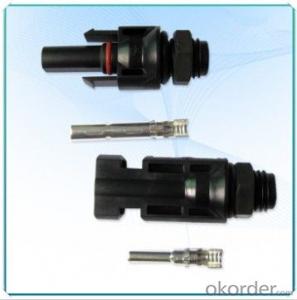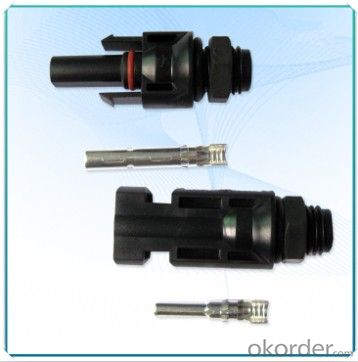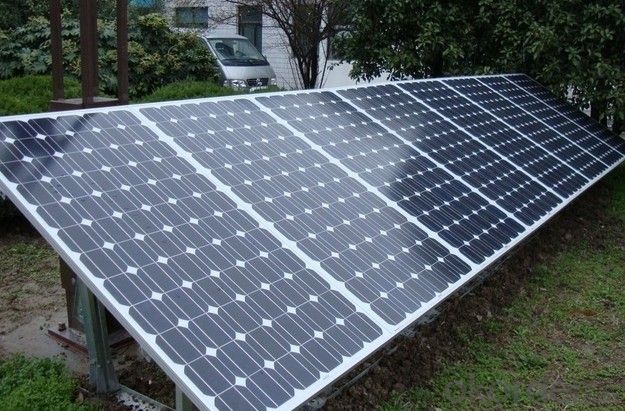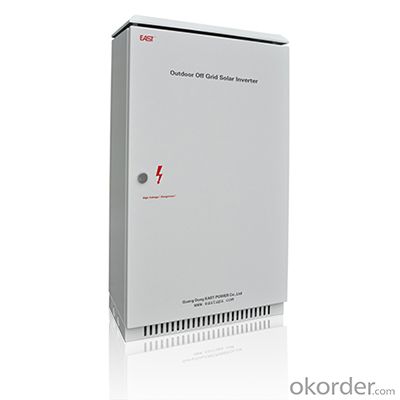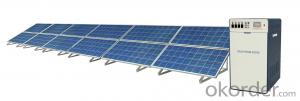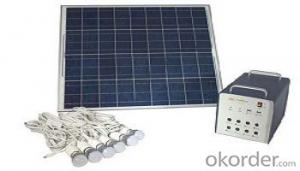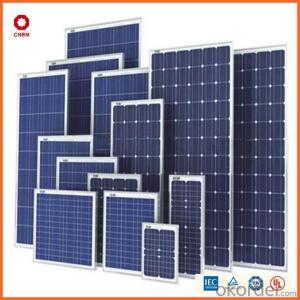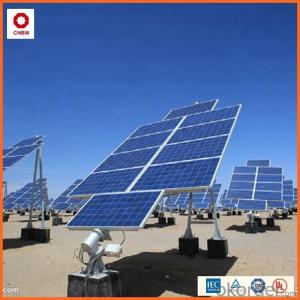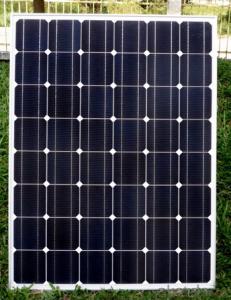Solar Energy Systems St. Paul MC4 Panel Connector - Simple, Quick and Safe Assembly
- Loading Port:
- Tianjin
- Payment Terms:
- TT OR LC
- Min Order Qty:
- 10000 pc
- Supply Capability:
- 1000000 pc/month
OKorder Service Pledge
OKorder Financial Service
You Might Also Like
Specification
MC4 panel connector (YF-1001-P) |
Description |
|
Parameter :
Model | YF-1001-P |
Type | MC4 Panel connector |
Rate voltage | DC1000V |
Junction current | 25A |
Contact Resistance | <0.3mΩ |
Safety Class | class Ⅱ |
Waterproof Grade | IP65 |
Temperature Range | -40℃~+85℃ |
Cable Standard | 2.5/4/6mm2 |
Flame Retardant Grade | UL94-V0 |
Insulation Material | PPO |
Composite Contact Material | Copper, silver plating |
Certification | TUV ,ETL |
Warranty | 12 months |
QTY/Ctn | 1000pairs/ctn |
Packing | Plastic bag |
Carton Size/Weight | 48*36*36CM , 22Kgs |
FAQ
1. How long will my inquiry get response?
Your inquiry related to our products or prices will be replied within 24 hours.
2. Can I get professional service and suggestion?
Well-trained and experienced staffs to answer all your questions in fluent English.
3. Do you accept OEM or customized design?
OEM & ODM, any your customized lightings we can help you to design and put into product.
4. What if I need specific design?
Distributorship are offered for your unique design and some our current models.


- Q: Can solar energy systems be used for powering research laboratories or scientific facilities?
- Yes, solar energy systems can definitely be used for powering research laboratories or scientific facilities. In fact, solar energy is becoming increasingly popular in the scientific community due to its numerous benefits. Firstly, solar energy systems are highly reliable and require minimal maintenance. Once installed, they can provide a consistent and uninterrupted power supply to research laboratories or scientific facilities, ensuring that critical operations are not disrupted. This is particularly important for facilities that require continuous power, such as those conducting experiments or running sensitive equipment. Secondly, solar energy is a clean and renewable source of power. By utilizing solar energy systems, research laboratories and scientific facilities can significantly reduce their carbon footprint and contribute to the global effort of combating climate change. This aligns with the scientific community's commitment to sustainability and environmental responsibility. Furthermore, solar energy systems can also help reduce energy costs for research laboratories and scientific facilities. While the initial investment in installing solar panels may be higher, the long-term savings on electricity bills can be substantial. This frees up resources that can be directed towards other important research activities or equipment upgrades. It is also worth mentioning that advancements in solar technology have made it increasingly efficient and capable of generating power even in less sunny areas. This means that research laboratories and scientific facilities located in regions with varying weather conditions can still benefit from solar energy systems. In conclusion, solar energy systems are a viable and advantageous option for powering research laboratories or scientific facilities. They provide reliable, clean, and cost-effective energy, aligning with the sustainability goals of the scientific community. As solar technology continues to improve, it is expected that the use of solar energy in research facilities will become even more widespread.
- Q: How does the angle and orientation of solar panels affect their performance?
- The angle and orientation of solar panels greatly impact their performance. The angle determines how directly the panels receive sunlight, with the optimal tilt varying based on location and season. Panels angled towards the sun maximize energy production, while steep angles may result in reduced efficiency. The orientation, whether facing south or a specific azimuth, also affects the total energy generated. Correctly aligning panels ensures they capture the maximum amount of sunlight, optimizing their overall performance.
- Q: How does solar energy impact the environment?
- Solar energy has a positive impact on the environment in several ways. Firstly, it reduces greenhouse gas emissions, which are the primary cause of climate change. Solar panels generate electricity without emitting any pollutants or greenhouse gases, unlike traditional fossil fuel-based power plants. By utilizing solar energy as a clean and renewable source of power, we can significantly reduce our carbon footprint and mitigate the detrimental effects of climate change. Secondly, solar energy helps in conserving water resources. Conventional power plants, such as coal or natural gas, require vast amounts of water for cooling purposes. In contrast, solar panels do not require water for their operation, leading to a significant reduction in water consumption and the strain on local water supplies. This is especially crucial in arid regions or areas facing water scarcity. Furthermore, solar energy helps in preserving biodiversity and ecosystems. The extraction and burning of fossil fuels often result in habitat destruction and pollution, which directly harm wildlife and plant species. Solar energy, on the other hand, has minimal impact on the environment during its operation. By promoting solar energy, we can reduce the need for destructive energy practices and protect fragile ecosystems. Additionally, solar energy has a positive impact on air quality and public health. Burning fossil fuels releases harmful pollutants such as sulfur dioxide, nitrogen oxides, and particulate matter, which contribute to air pollution and respiratory diseases. By transitioning to solar energy, we can significantly reduce the emissions of these pollutants, leading to cleaner air and improved public health outcomes. Finally, solar energy helps in reducing dependence on finite and imported energy sources. By harnessing the power of the sun, countries can become more energy independent and less reliant on fossil fuels, which often need to be imported. This not only enhances energy security but also helps to reduce geopolitical tensions and conflicts over scarce energy resources. In conclusion, solar energy has a positive impact on the environment by reducing greenhouse gas emissions, conserving water resources, preserving biodiversity, improving air quality, and promoting energy independence. By embracing solar energy on a large scale, we can mitigate climate change, protect ecosystems, and create a sustainable future for generations to come.
- Q: Can solar energy systems be used in powering restaurants or food chains?
- Solar energy systems are a viable option for providing power to restaurants and food chains. They are an eco-friendly and sustainable source of energy that can effectively reduce operational expenses and minimize the environmental impact of these establishments. Solar panels can be installed on rooftops or in open areas to capture sunlight and convert it into electricity, which can then be utilized for various functions within restaurants, including lighting, refrigeration, cooking equipment, and air conditioning. By adopting solar power, restaurants and food chains not only save on their energy bills but also showcase their dedication to sustainability and environmentally-conscious practices. Moreover, certain governments offer incentives and tax advantages to businesses that opt for solar energy systems, making it an even more appealing choice. All in all, solar energy systems are a practical and eco-friendly solution for powering restaurants and food chains.
- Q: Can solar energy systems be installed in urban areas?
- Yes, solar energy systems can be installed in urban areas. In fact, urban areas can be highly suitable for solar installations due to the availability of rooftops and open spaces on buildings. Additionally, advancements in solar technology have made it possible to integrate solar panels into urban infrastructure, such as solar-powered streetlights and parking meters. This allows urban areas to harness clean and renewable energy while utilizing available space efficiently.
- Q: Can solar energy systems be used in areas with limited access to training programs?
- Yes, solar energy systems can be used in areas with limited access to training programs. While training programs can be helpful in understanding the technical aspects of installing and maintaining solar energy systems, there are various resources available that can still enable individuals to utilize solar energy. Online tutorials, manuals, and guides can provide valuable information on the installation and operation of solar systems. Additionally, local experts or organizations can offer assistance and support in areas with limited access to formal training programs, ensuring the successful implementation of solar energy systems.
- Q: What is the impact of shading on the performance of solar panels?
- The performance of solar panels is greatly affected by shading, as it reduces the amount of sunlight reaching the cells and decreases energy production. This is because solar panels convert sunlight into electricity through the photovoltaic effect. When a solar panel is partially shaded, it creates a phenomenon called the "hotspot effect." This occurs when shaded cells within the panel become a pathway with high resistance for electricity flow, resulting in localized temperature increase. The increased heat can compromise the panel's performance and reduce its efficiency. Furthermore, shading also impacts the panel's voltage and current output. Solar panels are typically connected in series to increase voltage output. However, even a single shaded panel can significantly hamper the performance of the entire series-connected string. The shaded panel acts as a bottleneck, restricting current flow throughout the string. To minimize the effects of shading, various solutions can be employed. One commonly used method is the incorporation of bypass diodes, which allow current to circumvent the shaded cells and prevent the hotspot effect. By utilizing bypass diodes, energy loss due to shading can be minimized, ensuring that the rest of the solar panel operates efficiently. Additionally, proper design and placement of solar panels can help mitigate shading effects. Installing panels in areas with minimal obstructions or shadows, such as rooftops or open fields, maximizes their exposure to sunlight. Regular maintenance, including trimming nearby trees or vegetation that may cast shadows, is also crucial for optimal performance. In conclusion, shading significantly impacts the performance of solar panels, resulting in reduced energy production and efficiency. Understanding and addressing shading issues through the use of bypass diodes and careful installation can maximize the effectiveness and output of solar panel systems.
- Q: Can solar energy systems be used for powering disaster relief operations?
- Solar energy systems have demonstrated their worth in disaster relief efforts, serving as a highly valuable means of supplying electricity to affected areas. The deployment of solar panels and solar-powered generators to regions struck by natural calamities enables the provision of a dependable and sustainable source of power. A key advantage of solar energy systems lies in their ability to operate autonomously, independent of the power grid. This proves especially beneficial in disaster situations where the power infrastructure may be damaged or utterly destroyed. Solar panels are capable of generating electricity even in remote locations, thereby allowing relief workers to access power for vital operations, such as communication, medical services, lighting, and water purification. Furthermore, solar energy systems offer cost-effectiveness and environmental friendliness. Once installed, solar panels require minimal maintenance, with sunlight serving as an abundant and free energy source. Consequently, there is no need for costly fuel deliveries or the utilization of expensive diesel generators, which can pose logistical challenges and financial burdens in areas ravaged by disasters. Additionally, solar power produces no harmful emissions, thereby reducing the impact on the environment and enhancing air quality in already vulnerable regions. Moreover, solar energy systems can be easily scaled up to meet the escalating power requirements of disaster relief missions. Temporary solar arrays can be rapidly established, and if necessary, additional panels can be incorporated into the system to generate more electricity. This flexibility empowers relief organizations to adapt and respond to the changing needs of the affected population. Nevertheless, it is crucial to acknowledge that solar energy systems may have certain limitations. Their effectiveness is contingent upon the availability of sunlight, which can be influenced by weather conditions or geographical factors. In regions with limited sunlight or during periods of cloud cover, the system's output may be diminished. To surmount this challenge, energy storage solutions, such as batteries, can be integrated into the system to store surplus energy for use during periods of low sunlight. In conclusion, solar energy systems have consistently demonstrated their reliability, cost-effectiveness, and sustainability in powering disaster relief operations. They offer electricity independently of the grid, mitigate environmental impact, and can be readily expanded. By harnessing solar power, relief organizations can efficiently deliver essential services to those in need, thereby facilitating a swift recovery process in disaster-stricken areas.
- Q: Can a solar energy system be used in areas with high levels of pollution from industrial activities?
- Yes, a solar energy system can still be used in areas with high levels of pollution from industrial activities. While pollution can reduce the efficiency of solar panels over time due to dust and particulate matter accumulating on the surface, regular cleaning and maintenance can mitigate these effects. Additionally, advancements in solar technology have made panels more resilient to pollution, allowing them to still generate electricity even in polluted environments. Nonetheless, it is important to note that reducing pollution and transitioning to cleaner sources of energy is crucial for long-term sustainability and environmental health.
- Q: How much energy can a solar energy system produce?
- The amount of energy a solar energy system can produce depends on various factors such as the size of the system, the location, the amount of sunlight received, and the efficiency of the panels. On average, a solar energy system can generate enough electricity to meet a significant portion of a household's energy needs, and in some cases, even produce surplus energy that can be fed back into the grid.
Send your message to us
Solar Energy Systems St. Paul MC4 Panel Connector - Simple, Quick and Safe Assembly
- Loading Port:
- Tianjin
- Payment Terms:
- TT OR LC
- Min Order Qty:
- 10000 pc
- Supply Capability:
- 1000000 pc/month
OKorder Service Pledge
OKorder Financial Service
Similar products
Hot products
Hot Searches
Related keywords
